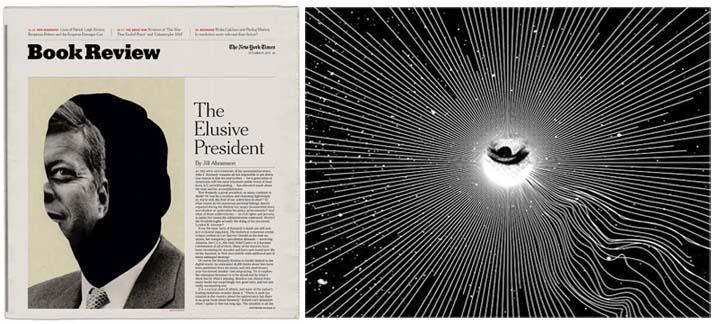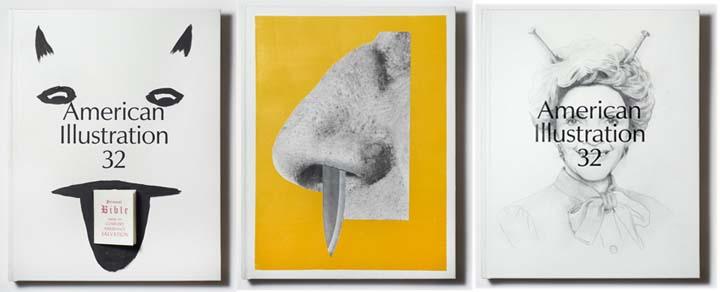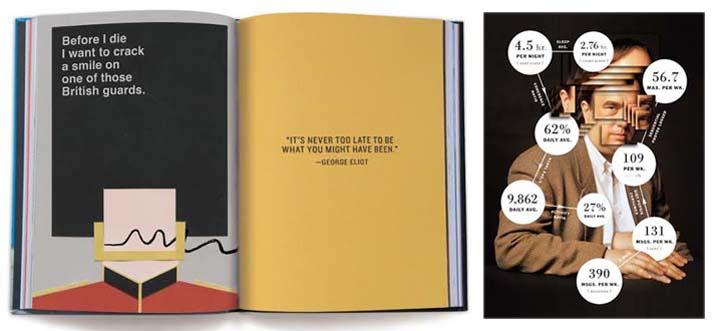The Q&A: Matt Dorfman
Originally from Pennsylvania, what are some of your favorite things about living and working in New York?
I was born in Philadelphia and grew up in a suburb 30 minutes west of the city. I moved to New York because I had a suspicion that that's where my job would eventually be (which it now is). If I was working anywhere else, I'd worry that I wasn't really truly earning my scars but being in NYC, I am fully aware of when I'm taking a punch.
How and when did you first become interested in art and illustration?
My parents handed me some markers shortly after I started crawling. After which, the options of doing anything else short of jungle gyms or meeting animals became markedly less appealing.
Illustration—as something distinctly separate from fine art—came alive for me while hunting down punk albums, psych albums and fanzines in my teens and seeing how art could make itself participatory, relevant and worthy of engagement outside of a gallery or a museum.
What is your favorite part of the creative process?
The aesthetics in my work tend to shift depending on the needs of the story, so my happiest moment is typically a few seconds after I land on an idea that interests me. But that sense of accomplishment is fleeting. The saddest moment usually follows a few seconds afterward when I have to figure out how best to execute that idea because that almost always hurts.
Do you keep a sketchbook? What is the balance between the art you create on paper versus In the computer?
The sketchbooks I keep now read more as short, repeating to-do lists. But drawing without regard to quality is still the best way to jump start reactions to whatever I'm working on so I keep one nearby wherever I go. It's rare that any work I'm commissioned to do is finalized on paper these days, but that's always where it originates.
 Left: Cover illustration for the New York Times Book Review. Art director: Nicholas Blechman.
Right: Section front illustration for the New York Times Science section. Art director: Peter Morance.
Left: Cover illustration for the New York Times Book Review. Art director: Nicholas Blechman.
Right: Section front illustration for the New York Times Science section. Art director: Peter Morance.
What is the most important item in your studio?
If I'm being honest, it's the computer I'm working on. Otherwise, it's that much more time consuming for me to make anything worthy of an argument.
What are you listening to?
I was recently sick and when I'm sick or tired I listen to 'Tonight's the Night' by Neil Young. When my health returned, I resumed listening to 'On the Beach' by Neil Young. Also Titus Andronicus. I fall hard for anthems.
What are you reading?
On the subway: Rabbit, Run by John Updike. Before I nod off at night: passages from Studs Terkel's Hard Times. The book is too thick to fit in my bag and if I try to read it on a screen, I won't remember it. The last book I forced upon people was Cockfigher by Charles Willeford. I should have read that years ago.
Who and what are some of your strongest influences?
Few people I know can out-work my father. Fewer still can out-will my mom. Dialogue, images and exchanges from Sam Peckinpah's Bring Me the Head of Alfredo Garcia serve as recurring voices in my head on a weekly basis. Also, Fugazi, because they are a perfect band.
Did your participation in the AI32 LIVE Cover Project have any spillover into your studio practice? Do you recommend marathon art projects for inspiration or redirection?
That exercise was great for entirely selfish reasons. I forced myself to switch approaches and mediums from cover to cover the same as I do for my typical weekday work, only this project granted me open permission to paint an LSD-addled ostrich and draw antennae on Nancy Reagan and glue an open zipper to a book and collage a knife shooting out of a giant nostril—all in the name of celebrating illustration. That kind of freedom takes a lot of exertion to fully take advantage of it, but it was worth it.
What was the last art exhibition you saw and what did you take away from it?
I was in Seattle recently and was able to view a large projection of William Kentridge's Shadow Procession. I don't know enough about Kentridge's complete works through now to know if it's my favorite piece of his, but it does make a compelling argument that art which isn't created out of struggle doesn't count.
 Selections from the AI32 Live Cover Project.
Selections from the AI32 Live Cover Project.
Have you ever had a creative block with a deadline looming? What do you do to get crackin’?
For good or for ill, the deadline usually is the principal source of inspiration. An op/ed assignment can be an ADHD prescriptive if you're willing to give yourself over to the speed and the process. Failing that, getting on the subway helps. The commute between work and home gives me enough distraction to help an idea take shape in my head or in my notebook and hopefully earn some justification to exist.
What is your karaoke song?
I typically choose songs far, far, far outside of my own pathetic register to mask how wretched a singer I am. The natural destination points for such a thing are either 'Smooth Operator' by Sade or 'School's Out' by the great Alice Cooper.
What is your hobby?
I've started going to a floatation tank on 23rd Street to relax. It's the only true (and clean) sensory deprivation tank in NYC. It's pitch black and dead silent and I can float there peacefully and unburdened of any looming obligation. The more I go, the more baggage I'm able to unpack when I'm just drifting in there. I love it, but it can be expensive so I have to budget it out as a merit based initiative. I go when I feel that I've earned it.
I can't in good conscience recommend this to anyone who doesn't do well with darkness and/or silence.
What advice would you give to a young illustrator who is just getting noticed?
An illustrator's voice is a billion times more valuable than an illustrator's style. A style can change but a voice is harder to find. Take care that the art is talking back to the words instead of just being its mirror.
Also, be patient with cold contacting art directors. They're all under water.
 Left: Illustration from The Buried Life. Art director, Kevin Brainard. Right: Illustration for Vanity Fair. Art director, Julie Weiss.
Left: Illustration from The Buried Life. Art director, Kevin Brainard. Right: Illustration for Vanity Fair. Art director, Julie Weiss.
Matt Dorfman is a designer, illustrator and art director of the New York Times Op/Ed page. Blog. Twitter: @mattdorfman. He will be speaking, with Megan Wilson and Jim Tierney, about book design, sleep deficits and stress positions at the Type Director's Club Book Night event: Present and Tense, on Thursday, March 13. Information.


